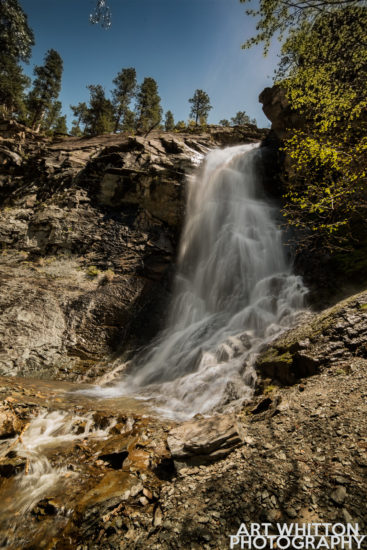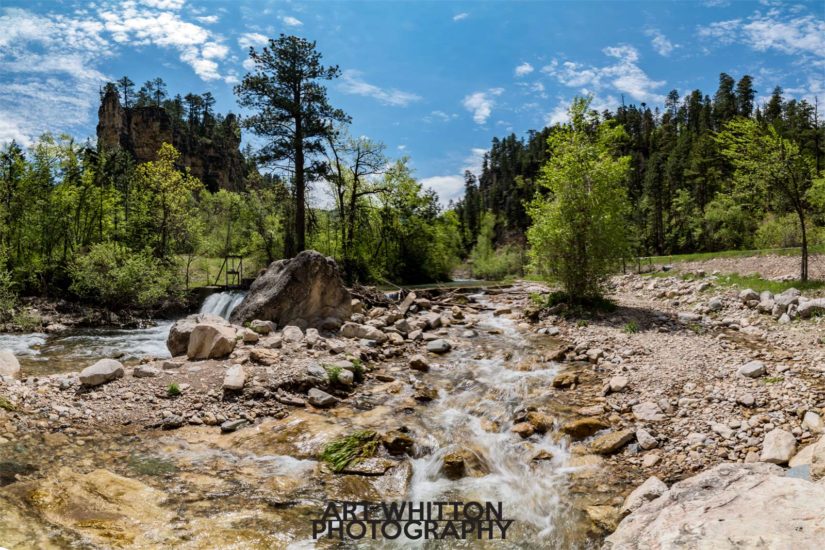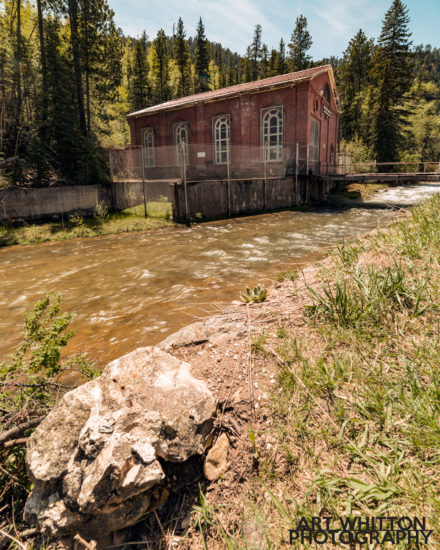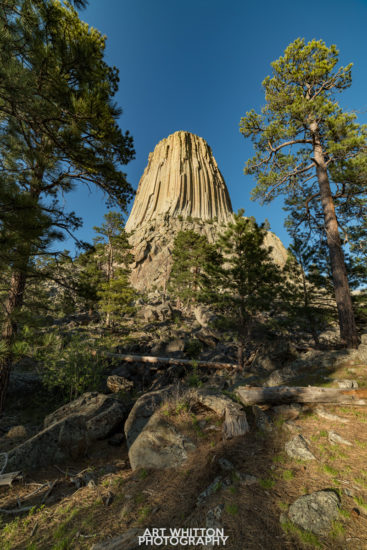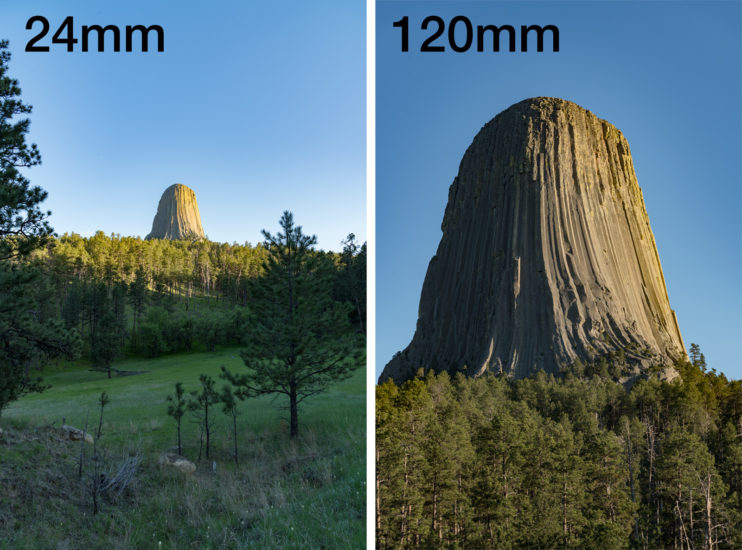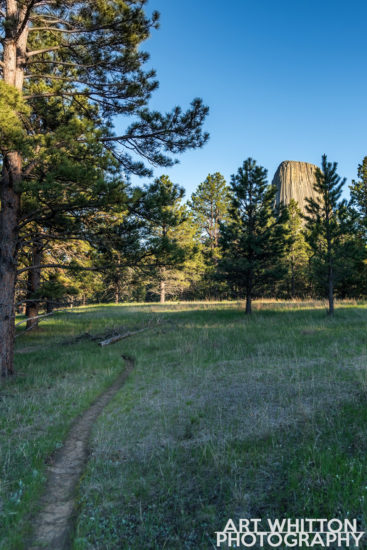This is the second part of my travel blog for 2019, which started in the Badlands National Park. This was a quick trip I took from Chester Nebraska up to South Dakota and back again (see the map).
As I wrote in the Badlands blog, I tried to time my visit to Devils Tower in time for sunset. This worked out well and I was able to arrive with plenty of time for a hike, and even spent a lot of time photographing Spearfish Canyon.
In hindsight I could have should have taken a little more time in each location, but was feeling a bit of a rush as I had to be back in Nebraska to shoot the Cattlemen’s Ball on the weekend. But the nice thing is, I can always go back!
Photographing Spearfish Canyon
I had driven through the Spearfish Canyon a few years earlier and loved the majestic scenery. It reminded me in some ways of my native British Columbia with rivers, waterfalls, trees and a scenic winding highway.
I suspected that the popular Bridal Veil Falls would be flowing well due to the high amount of rain the past few months. I was right and the creek and falls were looking great!
To get to the Spearfish Canyon, you just drive south of Spearfish and find Highway 14. It’s a spectacular winding road with many areas to pull off and take photos or find a trailhead. When you get to Savoy, you can either head east towards Custer State Park, or west (as I did) to Devils Tower.
There’s a lot to take in when you’re in the canyon. I suggest using a wide angle lens and in my case, I used my widest – a 14mm. I was able to get some foreground elements, the creek and the hills and trees in the background.
I handheld these shots as I was climbing over wet rocks to get close to the water, and a short lens length allowed me to shoot at slow enough shutter speeds to get some soft flow to the water.
Even the 14mm wasn’t wide enough for some vistas and the image above is a five shot panorama. The water was flowing well and a little cold, but it was fun to get out in the middle and scurry over rocks to find different perspectives.
At Bridal Veil Falls, there is a viewing platform, but you can (fairly easily) climb down the rocks to get to the creek. I went down to the creek to see if there was a better angle for the falls, but the view was mostly blocked by branches. There was a father and his sons who were crossing the creek, so that gave me incentive to do so as well. I asked for the best path and started across.
I had my car keys in a zip lock bag and carefully held my camera as I very slowly worked my way over the creek. The water was flowing enough to hamper my view of the rocks I would be stepping on, and cold enough to start freezing my feet about halfway. I eventually made to the other side and it was an easy climb up to the falls.
After shooting the falls for a while and enjoying the scene, I made my way back to car and carried on down the highway. Another stop was the 1917 hydroelectric plant.
I stopped a couple of more times and enjoyed a leisurely traffic-free drive through the canyon. Photographing the canyon is tough as the mid-day light caused a lot of shadows and highlights. Exposing for this was tricky, but with enough time, you can dial it to get the tonal range to your liking. In general, you don’t want to overexpose your highlights, and you can always bring out some detail in your shadows if needed (like the hydro plant above).
From here it was on to Sundance to find a room and then on to Devils Tower!
Devils Tower Photography
Devils Tower is the remnant of a volcano, and what you see is the lava columns which pushed up and eventually hardened. The softer landscape surrounding the column eroded away to leave the landmark. Most people will recognize it from the movie “Close Encounters of the Third Kind”. It had been on my photo bucket list for a while, and my goal was to shoot it late in the day.
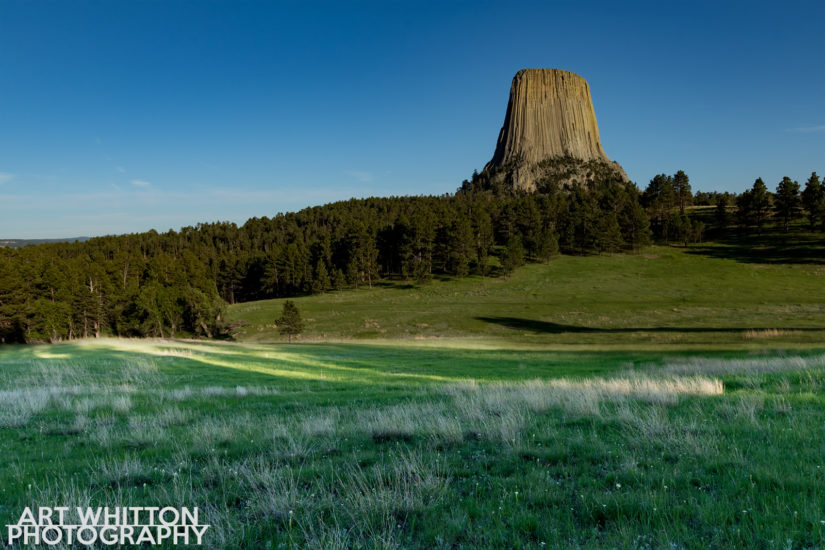
I had done some research and looked for an interesting place to shoot from. Some nice shots have been taken from campgrounds in the area, but I learned about the Joyner Ridge Trail, which runs north of the monument.
But before I hit the trail, I stopped at the visitor center and explored the Tower Trail which loops around the Tower.
The Tower Trail is a gently sloping trail that gets you close to the base of the Tower and provides you informational signs as you walk. I shot on this trail with my 14mm lens to catch as much foreground as I could to help frame the Tower. I didn’t walk the full loop as I wanted to allow myself plenty of time for the Joyner Ridge trail.
The trailhead parking lot was empty, which meant I had the 1.5 mile loop to myself, although I had some company early on as a deer walked the path ahead of me. The trail is a fairly easy hike, but does have some steeper areas.
Walking the trail puts the Devils Tower at a distance, so I took my 24-120 lens with me for this hike. The images below show the range of this lens and how it captured the Tower from the Joyner Ridge Trail.
The trail provides many great views of the Tower, and I had the late sun hitting from the west creating some nice contrast on the Tower and warm colors overall.
I made it through the trail with about 30 minutes to spare before sunset. I was able shoot the Tower silhouetted against a golden sky as I drove back to Sundance.
Summary: Devils Tower Photography
There is so much beautiful scenery in the Black Hills of South Dakota and the Wyoming. If you go any place in the area, take the time to see what is close, as distances between landmarks and monuments are short.
Bring an array of lenses, from wide to long so you can work the angles to get a range of shots. A tripod is helpful, but not totally necessary with today’s vibration reduction systems.
Plan your trips to hit the destination in the best light. Devils Tower at sunset is great. I might not have had great results if I shot Spearfish Canyon at sunset as the light would be flat and lower as the sun set over the canyon hills. Timing is everything!
Learn what you can about the trails you might be on and make sure they tie in with your level of fitness. Bring water. Allow ample time for yourself, not only for photography, but to just relax and enjoy these special locations.
Remember that many of these sites are sacred, so respect them. Respect the wildlife you might encounter.
Thanks for reading, and if you have any comments or questions please leave them below or email me at Art@ArtWhitton.com
Also: Here is my related blog post about Photographing Badlands National Park

